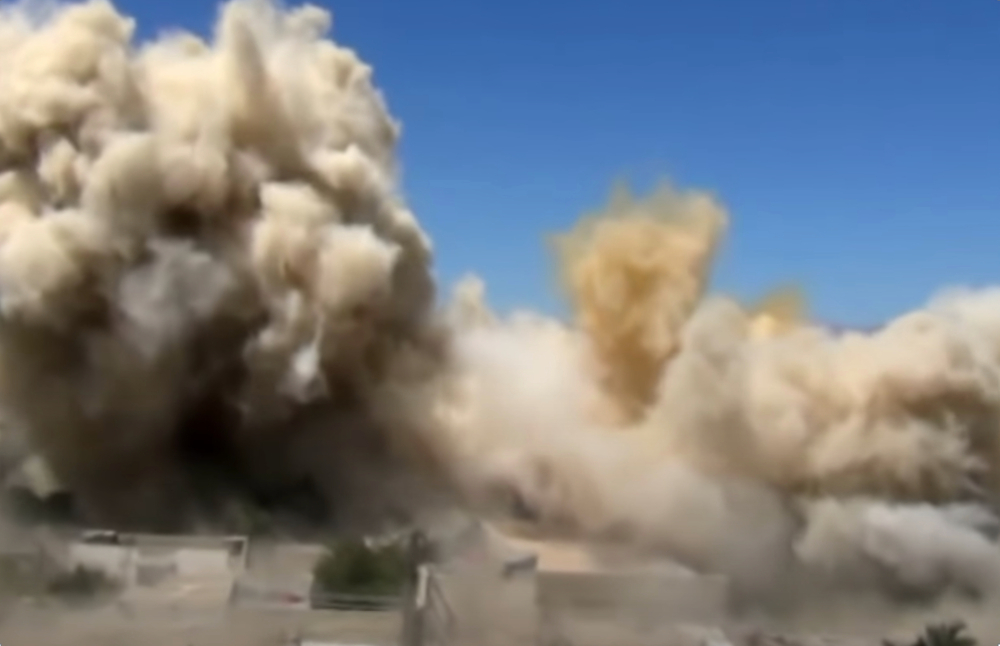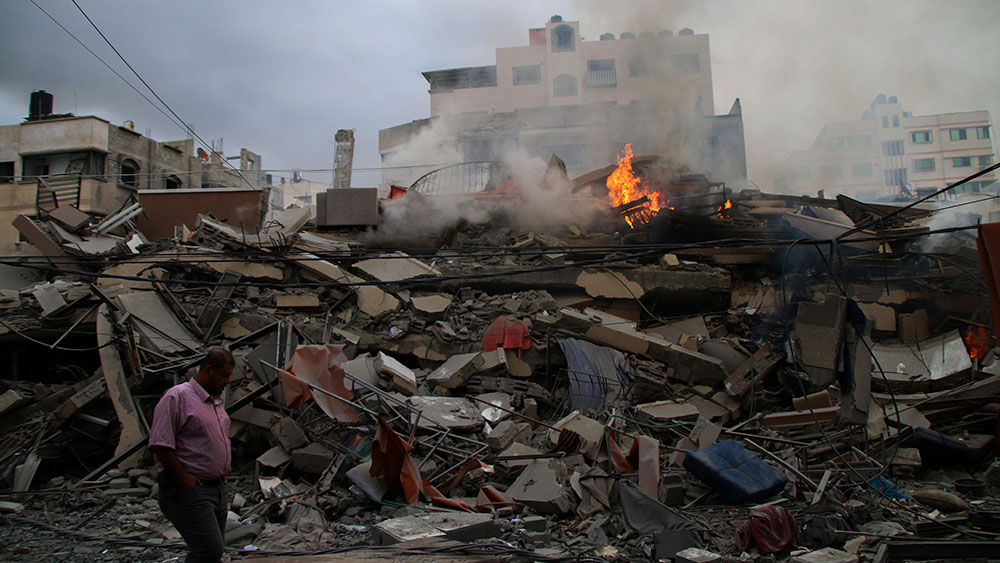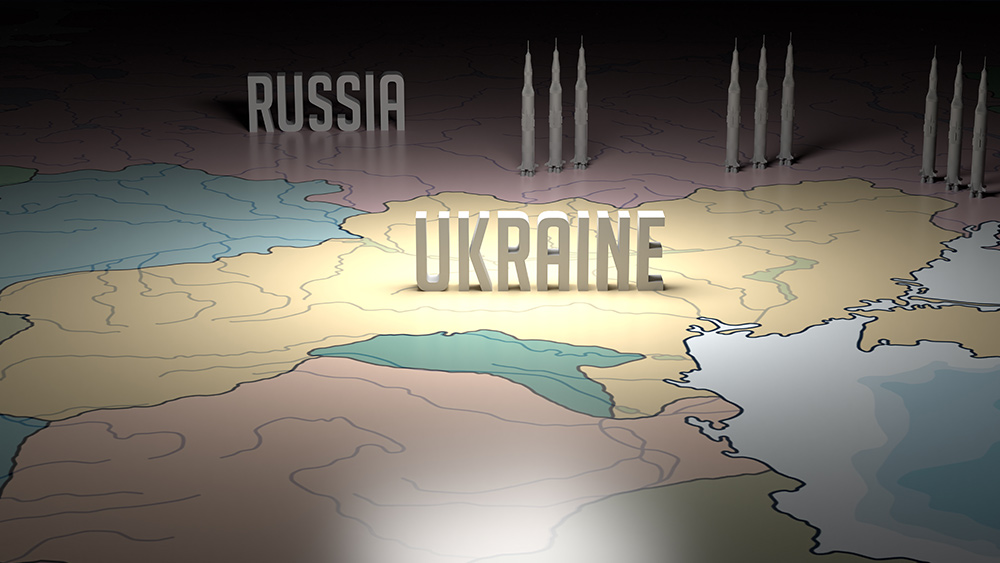Russia attacks Ukraine’s energy infrastructure in major retaliatory strike
12/16/2024 / By Cassie B.

- Russia launched a massive drone and missile attack on Ukraine’s energy infrastructure in retaliation for Kiev’s use of U.S.-supplied ATACMS missiles.
- The attack targeted critical fuel and energy facilities, leaving up to 50% of residential customers without power.
- Ukraine’s energy infrastructure, already severely damaged, faces further collapse as winter approaches.
- The Biden administration’s decision to greenlight ATACMS use has escalated tensions and provoked Russia’s harsh response.
- The conflict has entered a dangerous new phase, raising concerns about further escalation and the need for diplomacy.
Russia’s massive drone and missile attack on Ukraine’s critical infrastructure on Friday marks a significant escalation in the ongoing conflict, one that underscores the dangerous consequences of rising tensions between the two nations. The attack, which targeted Ukraine’s energy and fuel facilities, was a direct response to Kiev’s use of U.S.-supplied Army Tactical Missile Systems (ATACMS) to strike a Russian airfield inside Russian territory. This retaliatory move by Moscow raises serious questions about the Biden administration’s decision to greenlight the use of American-made missiles within Russia’s borders, a move that has now triggered a devastating counterattack.
Friday’s attack was one of the largest and most coordinated assaults on Ukraine’s energy sector since the war began nearly three years ago. According to Ukrainian President Volodymyr Zelenskyy, Russia launched 93 missiles and nearly 200 drones, targeting critical fuel and energy infrastructure. While Ukrainian defenses managed to intercept 81 missiles, including 11 cruise missiles shot down by Western-supplied F-16 fighter jets, the sheer scale of the attack has left significant damage in its wake. Reports indicate that up to 50% of residential customers could be without power, highlighting the fragility of Ukraine’s already battered infrastructure.
Russia’s Defense Ministry justified the attack as a response to Ukraine’s use of ATACMS missiles on a Russian airfield. The ministry claimed that the strike hit all intended targets, specifically targeting facilities that support Ukraine’s military-industrial complex. This move by Moscow is part of a broader strategy to cripple Ukraine’s ability to sustain its war effort, as well as to inflict suffering on civilians in an attempt to break their resolve.
Ukraine’s fragile infrastructure under siege
Ukraine’s energy infrastructure has been a primary target for Russian attacks since the beginning of the conflict. With around half of the country’s energy infrastructure already destroyed, rolling blackouts and power cuts have become a grim reality for millions of Ukrainians. The latest attack, which damaged thermal power plants and gas infrastructure, threatens to exacerbate an already dire situation. As winter sets in and temperatures drop, the loss of heating and electricity could have catastrophic consequences for civilians.
Russia’s strategy of targeting energy infrastructure is not new. The Kremlin has repeatedly attempted to undermine Ukraine’s ability to function as a nation by leaving its people in the dark and disrupting its defense manufacturing capabilities. This latest assault, however, is particularly alarming given the scale and precision of the attack, as well as its direct link to Ukraine’s use of U.S.-supplied weapons.
The Biden administration deserves some of the blame
The Biden administration’s decision to allow Ukraine to use ATACMS missiles inside Russian territory has proven to be a significant misstep. By greenlighting the use of these long-range weapons, the U.S. has effectively escalated the conflict, crossing what many viewed as a red line. Former President Donald Trump, who will soon return to the White House, has criticized this decision, arguing that it risks drawing the U.S. deeper into the war. Trump’s stance aligns with Russia’s position, as Kremlin spokesman Dmitry Peskov noted, emphasizing that both sides recognize the dangers of escalation.
The Biden administration’s support for Ukraine’s use of ATACMS missiles has not only emboldened Kiev but also provoked a harsh response from Moscow. By allowing these strikes, the U.S. has given Russia a pretext to escalate its attacks on Ukrainian infrastructure, further endangering civilians and prolonging the conflict. This decision underscores the need for a more cautious approach to military aid, one that prioritizes de-escalation over escalation.
A dangerous new phase in the conflict
The recent exchange of attacks between Russia and Ukraine represents a dangerous new phase in the conflict that threatens to spiral out of control. Russia’s retaliatory strike on Ukraine’s energy infrastructure is a clear message that any use of long-range weapons against Russian territory will be met with severe consequences. Meanwhile, Ukraine’s reliance on Western-supplied weapons has only deepened its dependence on external support, raising questions about its ability to negotiate a lasting peace.
As the conflict enters its third year, the Biden administration must reconsider its strategy and prioritize diplomacy over escalation. Allowing Ukraine to use ATACMS missiles inside Russian territory was a risky move that has now backfired, leading to a devastating counterattack and further destabilizing an already fragile region.
Sources for this article include:
Submit a correction >>
Tagged Under:
ATACMS, Biden administration, chaos, collapse, conflict, dangerous, electricity, energy supply, escalation, gas infrastructure, infrastructure, Kremlin, national security, power, power grid, Russia, Russia-Ukraine war, thermal power plants, Trump, Ukraine, violence, WWIII
This article may contain statements that reflect the opinion of the author
RECENT NEWS & ARTICLES
COPYRIGHT © 2019 Dangerous.News
All content posted on this site is protected under Free Speech. Dangerous.News is not responsible for content written by contributing authors. The information on this site is provided for educational and entertainment purposes only. It is not intended as a substitute for professional advice of any kind. Dangerous.News assumes no responsibility for the use or misuse of this material. All trademarks, registered trademarks and service marks mentioned on this site are the property of their respective owners.



















